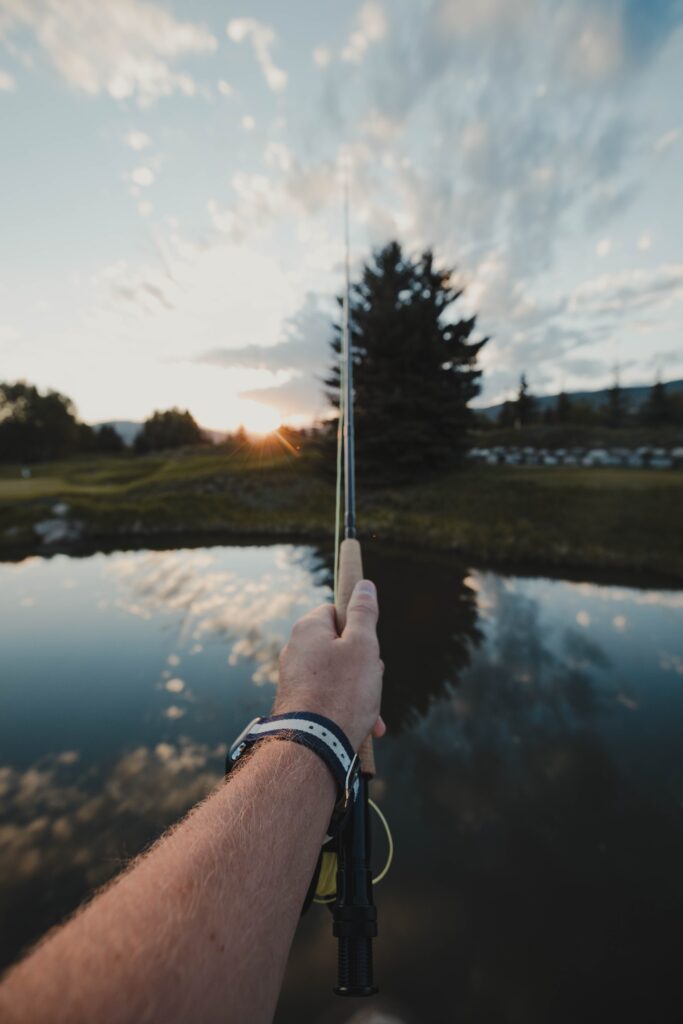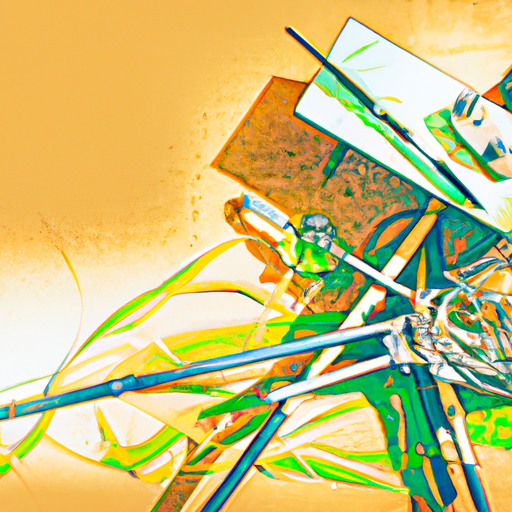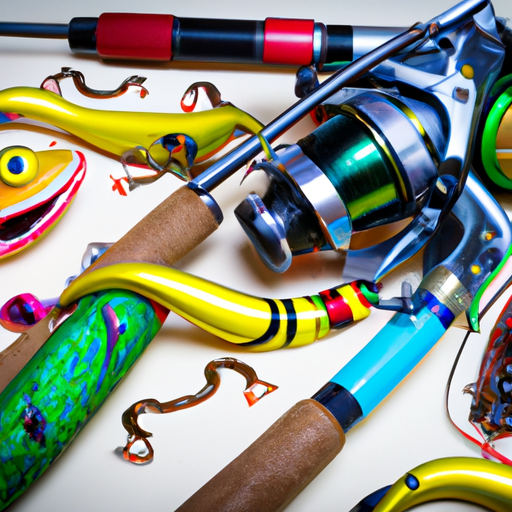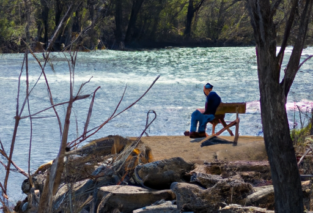Are you new to the world of fishing and feeling overwhelmed by the numerous regulations and seasons you need to navigate? Look no further than the “Navigating Fishing Regulations and Seasons: A Guide for Newbies”! This essential guide is designed specifically for beginners like you, providing a comprehensive breakdown of fishing regulations and seasons. Whether you’re a freshwater or saltwater angler, this handy resource will help you understand the rules, understand the seasons, and ensure you have a successful and enjoyable fishing experience. Don’t let confusing regulations discourage you from pursuing your passion for fishing – let this guide be your go-to companion on your fishing adventures!
Understanding Fishing Regulations
Why Fishing Regulations Exist
Fishing regulations are put in place to protect fish populations, ensure sustainable fishing practices, and maintain the overall health of aquatic ecosystems. They are designed to balance the needs of anglers with the need to preserve fish populations for future generations. By regulating fishing activities, authorities can prevent overfishing and the depletion of fish stocks, as well as minimize the negative impacts on sensitive habitats. Fishing regulations also help maintain the diversity of aquatic species and promote responsible fishing practices.
Different Types of Fishing Regulations
There are various types of fishing regulations that anglers must be aware of. These include fishing seasons, bag and size limits, protected species regulations, prohibited fishing methods, and licensing requirements. Each type of regulation serves a specific purpose and helps in managing and conserving fish populations effectively.
Researching Fishing Regulations
Before heading out for a fishing trip, it is crucial to research and understand the fishing regulations specific to the area you plan to fish in. Regulations can vary depending on the state, region, or even the body of water you intend to fish in. To ensure compliance, you can consult the official websites of local wildlife and fisheries agencies, obtain fishing guides or brochures, or contact local fishing organizations for up-to-date information. Understanding and following fishing regulations not only helps protect fish populations but also ensures you avoid any legal repercussions.
Fishing Seasons
What are Fishing Seasons
Fishing seasons refer to specific time periods during which anglers can legally fish for certain species. It is important to note that fishing seasons are set to coincide with the breeding, spawning, or migration patterns of different fish species. By establishing fishing seasons, authorities aim to protect vulnerable fish populations during crucial reproductive periods. Fishing outside of the designated season can lead to negative consequences for fish stocks and disrupt the natural life cycle of aquatic species.
Importance of Fishing Seasons
Fishing seasons are essential for maintaining the sustainability of fish populations. They allow fish to reproduce and replenish their numbers, which is vital for the long-term health of aquatic ecosystems. By respecting fishing seasons, anglers can contribute to the conservation efforts while enjoying the sport responsibly. Fishing during the appropriate season ensures that fish populations remain stable, providing ample opportunities for everyone to engage in enjoyable and successful fishing experiences.
How Fishing Seasons are Determined
Fishing seasons are determined through extensive research and data analysis by fisheries scientists and authorities. Factors such as fish migration patterns, reproductive behavior, and population assessments are taken into account to establish fishing seasons. By understanding the natural life cycles of fish species, experts can identify the optimal periods for fishing and implement regulations accordingly. Fishing seasons may vary depending on the species, geographic location, and environmental conditions, so it is crucial to stay informed about the specific regulations for your fishing area.

Fishing License
Why You Need a Fishing License
Obtaining a fishing license is a legal requirement in most jurisdictions and serves multiple purposes. Fishing licenses help fund conservation efforts and fishery management programs, ensuring the sustainability of fish populations and their habitats. Additionally, licenses enable wildlife agencies to collect important data on fish populations and angler participation, which aids in making informed decisions regarding fishing regulations. By purchasing a fishing license, you contribute to the conservation of aquatic resources and support the continuation of a beloved pastime.
Types of Fishing Licenses
Fishing licenses come in various forms, catering to different types of anglers and fishing preferences. Common types of fishing licenses include resident licenses, non-resident licenses, youth licenses, senior licenses, and disability licenses. Additionally, some areas may offer short-term licenses for visitors or temporary residents. It is important to carefully review the available license options and choose the one that best suits your fishing needs. Fishing license fees often vary depending on factors such as residency status, age, and duration of validity.
How to Obtain a Fishing License
Acquiring a fishing license is typically a straightforward process. In many cases, licenses can be purchased online through the official websites of wildlife and fisheries agencies. Alternatively, you may be able to obtain a fishing license in person at authorized retailers, such as sporting goods stores or tackle shops. When applying for a fishing license, you will typically need to provide certain personal details, such as your full name, address, and identification information. It is essential to ensure that your fishing license is valid and up to date before engaging in any fishing activities.
Catch and Release
The Concept of Catch and Release
Catch and release is a fishing technique that involves catching a fish and immediately releasing it back into the water unharmed. This practice allows anglers to enjoy the thrill of catching fish while minimizing the impact on fish populations. Catch and release can be practiced in both recreational and sport fishing settings and promotes the conservation of fish stocks by ensuring their survival and reproduction.
Benefits of Catch and Release
Catch and release offers several benefits for fish populations and the overall ecosystem. Firstly, it allows fish to continue their natural life cycle by returning them to their habitat. This ensures that they can spawn, reproduce, and contribute to the sustainability of the population. Catch and release also helps preserve genetic diversity within fish populations, as both young and mature fish are released. Additionally, this practice promotes ethical angling practices and reduces unnecessary harm to fish, allowing future generations of anglers to enjoy fishing in the same waters.
Tips for Proper Catch and Release
To ensure the success of catch and release, there are important guidelines that anglers should follow. Using barbless hooks or promptly removing barbs from hooks can minimize injury to fish during release. Handling fish with wet hands or using a landing net can help protect their delicate skin and scales. It is vital to avoid keeping fish out of the water for prolonged periods and to release them gently, facing into the current if possible. By following these best practices, anglers can maximize the chances of fish survival after being caught and released.

Bag and Size Limits
Understanding Bag and Size Limits
Bag and size limits refer to the restrictions placed on the number of fish that anglers can keep (bag limit) and the minimum size a fish must be to be legally retained (size limit). These restrictions are implemented to prevent overfishing of certain species and ensure the sustainability of fish populations. Bag limits help control the number of fish removed from the ecosystem, while size limits allow fish to reach maturity and reproduce before being harvested.
Impacts of Bag and Size Limits
Bag and size limits play a crucial role in maintaining the health and abundance of fish populations. By limiting the number of fish that can be taken, bag limits help prevent overfishing and ensure the availability of fish for future generations. Size limits protect younger fish and allow them to grow and contribute to the overall population. These regulations also promote responsible angling practices and discourage the targeting of small or vulnerable fish species.
How to Comply with Bag and Size Limits
Complying with bag and size limits requires careful knowledge of the regulations specific to your fishing area. It is essential to familiarize yourself with the bag limits for different fish species, as well as the minimum size requirements. Measuring devices, such as tape measures or fish rulers, should be carried to accurately determine the size of a catch. If a fish does not meet the size limit or exceeds the bag limit, it should be released immediately and unharmed. Adhering to bag and size limits ensures the sustainability of fish populations and helps maintain the balance of aquatic ecosystems.
Protected Species
Identifying Protected Species
Protected species are fish species that are legally safeguarded due to their rarity, vulnerability, or significance to the ecosystem. These species often have specific regulations in place to protect them from overfishing or habitat destruction. Identifying protected species can be challenging, as different regions may have distinct lists of protected fish species. It is crucial to consult local fishing regulations, guides, or resources provided by wildlife agencies to identify protected species in your fishing area accurately.
Regulations for Protected Species
Fishing regulations for protected species may include outright bans on harvesting, specific size limits, or catch and release requirements. Authorities impose these regulations to protect the population of protected species and allow them to recover from the pressures of human activity. It is important to familiarize yourself with the specific regulations for each protected species and ensure strict compliance to contribute to their conservation.
Reporting Protected Species Encounters
If you accidentally catch a protected species while fishing, it is vital to handle it with care and immediately release it back into the water unharmed. Any interactions or sightings of protected species should be reported to the appropriate wildlife agency, as this information helps in monitoring their populations and protecting their habitats. Reporting these encounters contributes to conservation efforts and ensures the authorities have accurate data for managing and protecting these valuable species.

Prohibited Fishing Methods
Understanding Prohibited Fishing Methods
Prohibited fishing methods are techniques or equipment that are deemed harmful to fish populations, habitats, or other aquatic organisms. These methods are forbidden due to their destructive nature, potential for overexploitation, or negative impact on the environment. Prohibited fishing methods can include the use of certain types of nets, explosives, electrofishing devices, or substances that are harmful to aquatic life.
Consequences of Using Prohibited Methods
Using prohibited fishing methods can lead to severe ecological consequences and legal penalties. These methods often result in the indiscriminate capture of both target and non-target species, causing significant damage to fish populations and habitats. Engaging in prohibited fishing methods not only undermines conservation efforts but also poses a threat to the overall health and diversity of aquatic ecosystems. Legal repercussions for using prohibited methods can include fines, loss of fishing privileges, or even criminal charges.
Alternative Fishing Methods
To fish responsibly, it is crucial to use legal and sustainable fishing methods. There are numerous alternative fishing techniques that are both effective and environmentally friendly. Some popular methods include angling with appropriate rod and reel setups, fly fishing, spearfishing, or using passive gear like traps or crab pots. By choosing these methods, anglers can enjoy a fulfilling fishing experience while minimizing negative impacts on fish populations and their habitats.
Fishing Gear and Equipment
Essential Fishing Gear
To engage in successful and enjoyable fishing, certain essential gear is required. These include fishing rods and reels, fishing line, hooks, sinkers, and bait. The choice of gear may vary depending on the fishing technique, target species, and the fishing environment. It is important to select gear that is appropriate for the fish species you intend to catch, ensuring that it meets legal requirements and promotes responsible fishing practices.
Types of Fishing Equipment
Fishing equipment encompasses a wide range of tools and accessories that enhance the fishing experience. Some common types of fishing equipment include baitcasting reels, spinning reels, fishing tackle boxes, fishing hooks, artificial lures, landing nets, and fishing line cutters. The selection of fishing equipment should be based on the fishing technique, personal preference, and the target species. Understanding and using the right equipment can significantly improve your chances of success while minimizing stress on fish.
Tips for Properly Using Fishing Gear
To ensure proper and effective use of fishing gear, it is important to familiarize yourself with its functioning and maintenance. Learning to cast with accuracy and precision will help maximize your chances of landing a catch. Maintaining your fishing gear regularly, such as cleaning and lubricating reels, checking line strength, and replacing worn-out components, ensures optimal performance and prolongs the lifespan of your equipment. Additionally, practicing proper storage techniques can prevent damage to fishing gear and ensure its longevity.

Fishing in Different Bodies of Water
Fishing in Lakes
Lakes offer diverse fishing opportunities and are home to a wide variety of fish species. When fishing in lakes, it is important to understand the specific regulations and any additional guidelines established by local authorities. Targeting popular game fish like bass, trout, or walleye may require specific techniques, gear, or bait choices. It is also essential to be aware of any restricted areas or restricted seasons that may be in place to protect sensitive habitats or spawning grounds. By respecting the regulations and using appropriate fishing methods, you can enjoy a rewarding fishing experience in lakes.
Fishing in Rivers
Rivers provide unique fishing experiences, with a range of fish species that can vary depending on the region and the river’s characteristics. Fishing in rivers often involves navigating strong currents, so it is crucial to prioritize safety and wear appropriate personal flotation devices when needed. Understanding the behavior of fish in rivers, such as their preferred habitat, feeding patterns, and spawning areas, can greatly increase your chances of success. It is also vital to be mindful of any fishing closures or restrictions in certain stretches of rivers to protect fish during critical periods.
Fishing in Saltwater
Saltwater fishing offers anglers the opportunity to target a wide array of fish species, from popular game fish like marlin, tuna, or snook to a variety of bottom-dwelling species. When fishing in saltwater, it is important to be aware of the specific regulations for the area you plan to fish in, as saltwater fisheries are often subject to additional restrictions. Understanding tidal patterns, weather conditions, and the behavior of saltwater fish can greatly enhance your fishing experience. It is also essential to use appropriate gear and techniques that are suitable for the target species and the challenging conditions of saltwater environments.
Responsible Fishing Practices
Leave No Trace Principles
When engaging in fishing activities, it is essential to abide by the principles of Leave No Trace. These principles emphasize minimizing your impact on the environment and leaving the fishing area as pristine as possible. Carry out any trash or fishing gear you bring with you, avoid damaging vegetation or disturbing wildlife, and ensure that you leave the area in better condition than you found it. By practicing Leave No Trace, you help preserve the natural beauty of fishing locations and maintain the health of aquatic ecosystems.
Importance of Protecting the Environment
Protecting the environment is crucial for the long-term sustainability of fish populations and the overall health of aquatic ecosystems. Pollution, habitat degradation, and the introduction of invasive species can have devastating impacts on fish and their habitats. As responsible anglers, it is essential to take measures to minimize your environmental footprint. This includes proper disposal of fishing line, avoiding the use of harmful chemicals or excessive bait, and reporting any signs of pollution or habitat destruction to the appropriate authorities. By actively protecting the environment, you contribute to the preservation of fishing opportunities for present and future generations.
Educating Others about Responsible Fishing
As an angler, you can make a positive impact by educating others about responsible fishing practices. Sharing your knowledge, experiences, and passion for fishing with newcomers or fellow anglers helps promote a culture of responsible angling. Teach others about fishing regulations, catch and release techniques, and the importance of protecting fish populations and their habitats. By spreading awareness and encouraging responsible fishing practices, you can inspire others to become stewards of the environment and contribute to the long-term sustainability of fish populations.
In conclusion, understanding and adhering to fishing regulations is vital for every angler. Fishing seasons, licenses, catch and release practices, bag and size limits, protected species regulations, prohibited fishing methods, and responsible fishing practices all contribute to the conservation and sustainability of fish populations and the health of aquatic ecosystems. By familiarizing yourself with the regulations specific to your fishing area, using appropriate gear and techniques, and adopting responsible angling practices, you can enjoy the sport of fishing while ensuring that it thrives for generations to come. Happy fishing!






